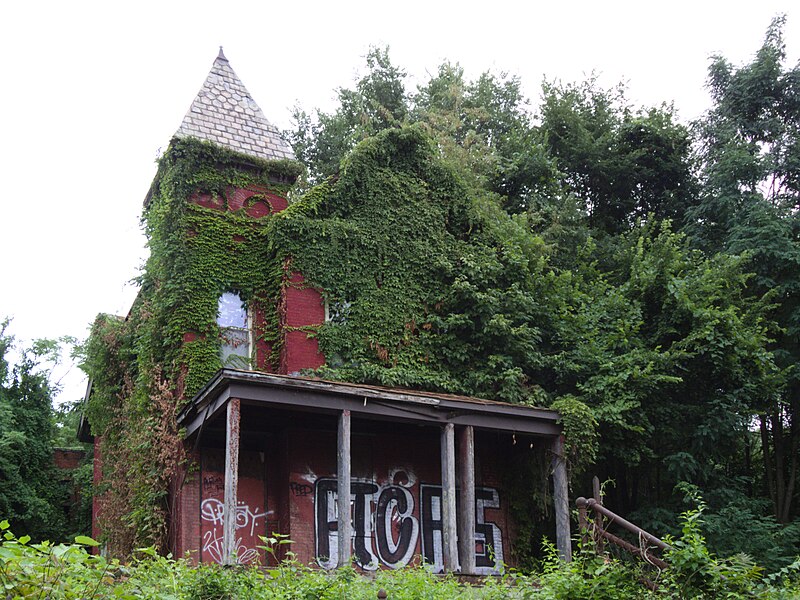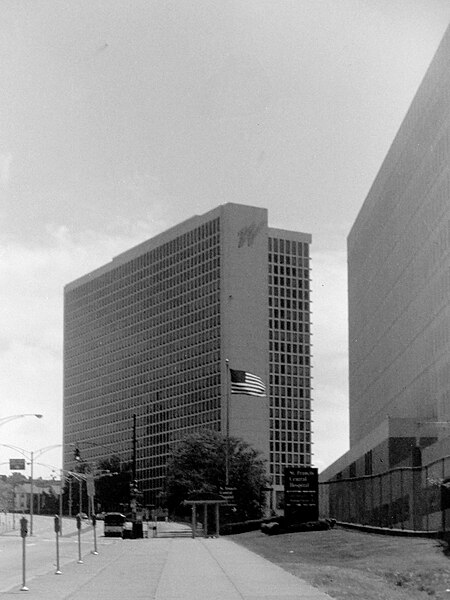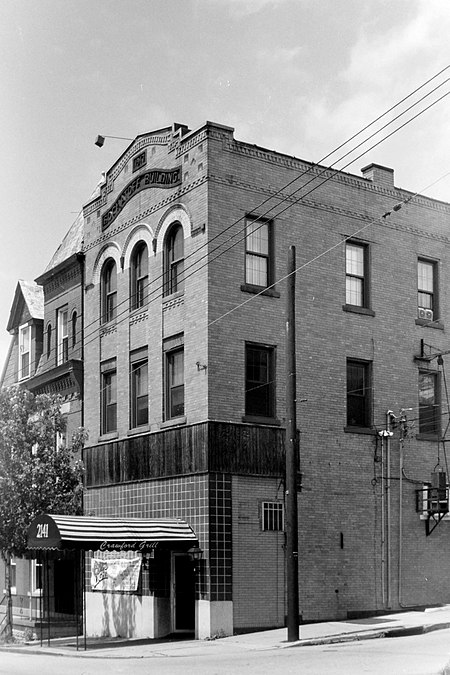
Uptown is a strange neighborhood right now. A lot of development is going on, and a lot of decay is going on, and they are going on in the same blocks. This house is obviously not in perfect shape at the moment, but it was just recently declared a city historic landmark—partly for its architecture, but mostly for its associations.
Joe Tito was a bootlegger during Prohibition; when Prohibition ended, he invested the proceeds of his crimes in what was now legitimate business and bought the Latrobe Brewing Company, which had existed before Prohibition but had been closed for years. In 1939 he introduced the Rolling Rock brand, which was brewed in Latrobe until it was bought and moved to New Jersey. (Latrobe, currently owned by the City Brewing Company of Wisconsin, now brews Iron City and Stoney’s and other contract brews.)
Joe’s best friend in the world was Gus Greenlee, the Black entertainment magnate from the Hill famous in jazz legend as the owner of the Crawford Grill. Mr. Greenlee bought the equally legendary Pittsburgh Crawfords baseball team, and Mr. Tito invested in it.
The historic designation for this house came after much acrimonious debate. The owner of the property opposed it, since the house itself is not valuable but the property stands in an area that may soon be desirable. Some of the other opponents opposed on the grounds that the house was associated with organized crime, which suggests a strange view of what constitutes “history”: it is something like saying that the Marne should not be a historic battlefield because it is associated with the Kaiser. If historic buildings cannot be associated with sinners, then the only city with any historic buildings at all will be the New Jerusalem.
Now that it’s historic, what is to be done with this house? That is the interesting question. Uptown is rapidly developing as a neighborhood of urban loft apartments; is there any room for a single-family house? Is the house big enough to divide into profitable apartments? Or will it mysteriously catch fire some night?

We should note that Fifth Avenue is the dividing line between neighborhoods on city planning maps, which technically puts this house in the Crawford-Roberts section of the Hill. Ordinary Pittsburghers think of both sides of Fifth Avenue as Uptown, however, and most of the media reports about this house have mentioned Uptown as the neighborhood.










